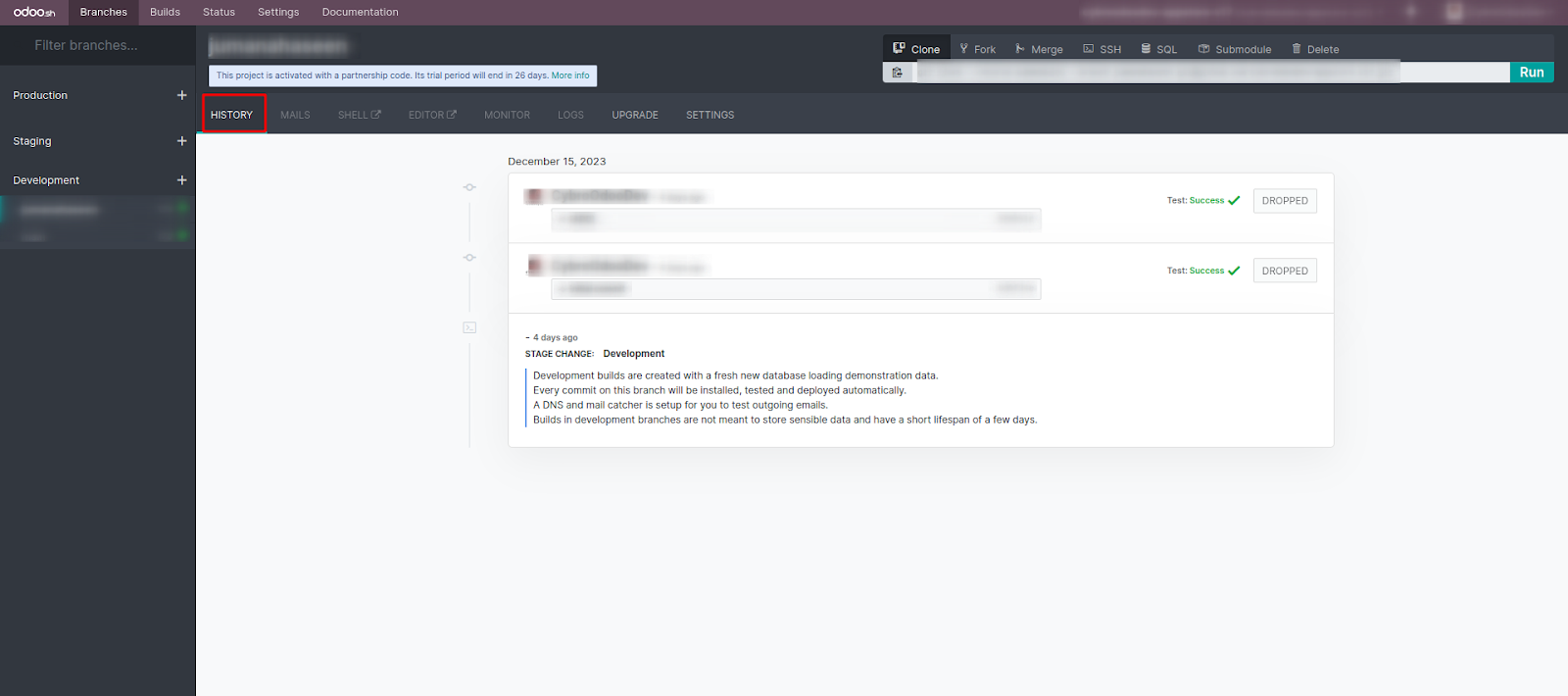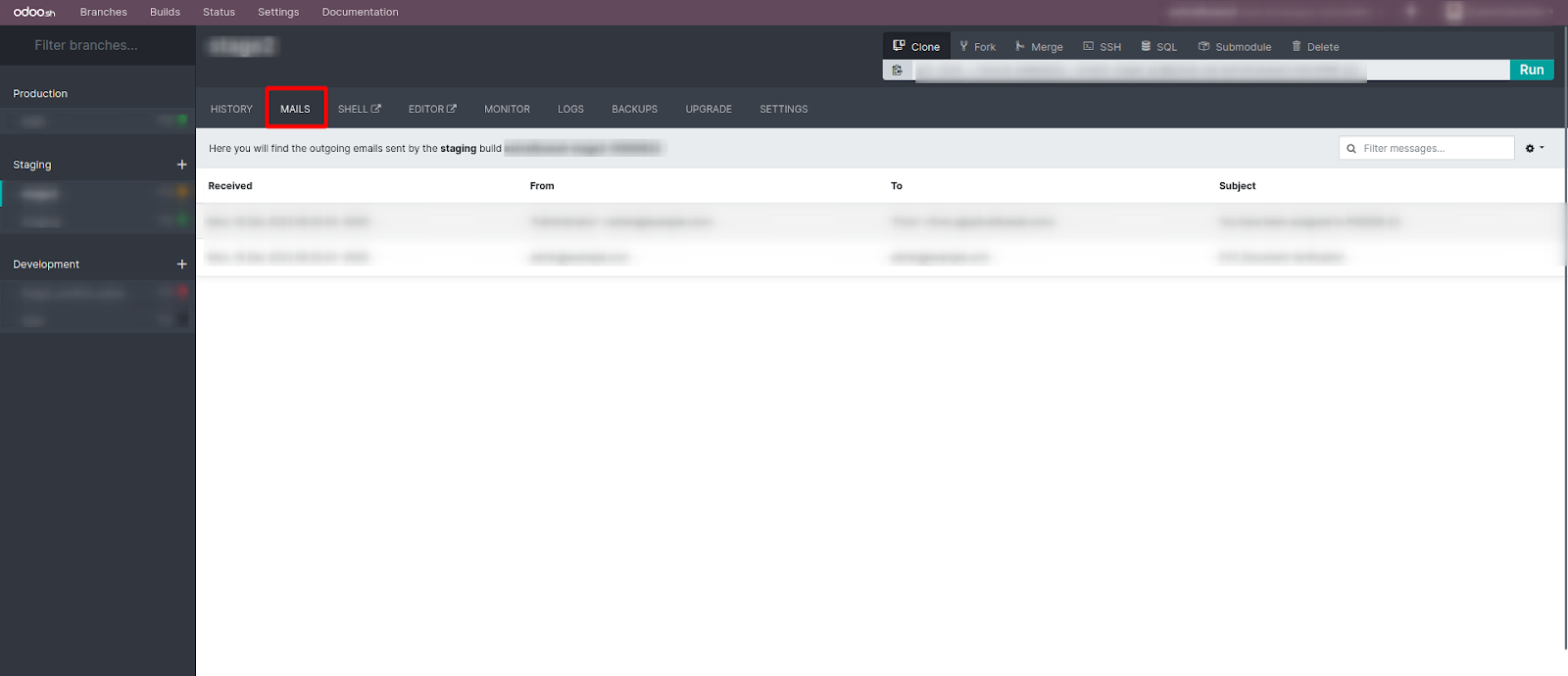Odoo.sh offers various features designed for debugging purposes.
Branch history
Within the History menu of a branch, you can access a comprehensive overview of the build history for that specific branch. This section provides insights into logs, merges, new commits, and database restores.

Mail catcher
In the Development and Staging branches, the mail servers are restricted, and they do not send real emails. If you want to test your email system before deploying new features to production, you can use the mail catcher in the Development and Staging branches. It will display all outgoing emails.
In the MAILS tab, you can see a list of all the captured mail with all attachments. The MAILS tab will only be displayed in the staging and development branches.

Web shell
You can access the web shell, providing a gateway to the source code, logs, file store, and more. This interface encompasses all typical shell features, incorporating editors like nano and Vim. With shell access, you gain the ability to navigate between different directories and perform various operations. Additionally, the pip command is available for installing Python packages.
In certain situations, you might need to restart the server or update a module directly from the shell. To restart the server, employ the following command:
odoosh-restart
For updating a module, execute the following command in the shell:
Odoo-bin -u my_custom --stop-after-init
This command specifically updates the my_custom module. If you intend to update multiple modules simultaneously, you can provide module names separated by commas.